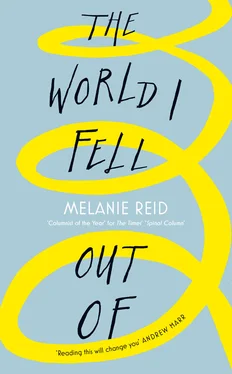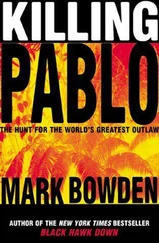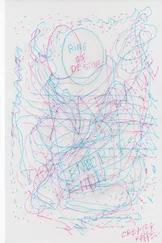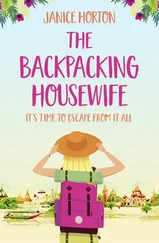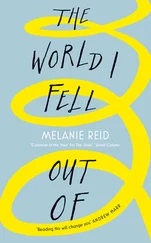1 ...6 7 8 10 11 12 ...17 Once in the chair, I could resume some adult responsibility. My immediate boss at The Times , Magnus Linklater, had been one of the very few allowed in to visit soon after the accident. He had told me not to worry, and kissed me on the forehead. The kiss struck me as terribly kind but rather worrying. Was I really so ill? It was evident to all but me. Then Anne Spackman, the comment editor, who told me she had wept as she transcribed that initial tape recording, flew up from London. I showed her how, now I was up, I could use a laptop with one finger. I couldn’t grasp why everyone seemed so surprised about my determination to try and get working again. Anne was followed by the editor of The Times at the time, James Harding. The nurses arranged for me to meet him in the conference room. Hazily fearful, I think I expressed my insecurities about the future. He could not have been more supportive. Could I continue to write, I asked hesitantly. The professional editor in me, despite the madness of the morphine, smelt a source of good copy. Of course I could, he said. In fact, he wanted a weekly column about my recovery, to be published in the Saturday magazine. My heart, I remember, leapt.
‘The only thing is, we don’t know what to call it.’
‘Oh, I’ve already thought about that. What about “Spinal Column”?’
Did he know, this most human, warm, sophisticated man, that he was handing me a precious lifeline? Not just in terms of my family’s future, but of my psychological survival. Here was a chance for me to create my own biographical narrative, to write towards some kind of redemption.
Labouring under many illusions, and feeling quite breezy – I do think the opiates were largely to blame at that stage – I then tackled my first session in the gym, which swiftly brought home the brutal realities of my situation. The cruel parallels of two worlds were beginning to impact on me, old and new crushing me between them: the gyms as I had been familiar with them, Lycra-ed temples of beautiful fit bodies in motion; and gyms, paralysis-style, where broken, frozen people were propped upright, in various stages of disorientation and bewilderment. Plus, there were unseen horrors to discover. I was about to have a crash course in the reality of paralysed bowels. As two physiotherapists used a hoist to lift me from wheelchair to specialist rehabilitation plinth, gravity struck. My bowels suddenly and involuntarily emptied. The only way I knew was by the sound and then the nostril-fluttering smell, which trapped me in a ghastly freeze of humiliation. What was the famous Nike gym slogan? Just do it? Well I just did. ‘Uh-oh,’ said the physiotherapist at the wrong end.
Too upset even to cry, I could only stammer my apologies, but they were totally nonplussed, matter-of-fact. Don’t worry, they said. Part of the job. Happens all the time. For me it seemed catastrophic. My first morning in the gym, when I had planned to hit the machines, develop sizeable shoulders and start my legs moving again, all within the space of an hour, and there I was being lowered, stinking, onto pads on the wheelchair, hurried back to the ward, laboriously hoisted again onto a bed of pads and rolled and cleaned like a baby. I was getting an inkling of what exactly paralysis entailed.
Over the next few days, I had a few more brief sessions in the gym when, thank God, my bowels did not betray me. The gym offered a welcome distraction from reflection. It wasn’t wise to sit and dwell on your plight. ‘Gym,’ one cynical spinal consultant once muttered, ‘is really only there to take people’s mind off things.’ You hid your despair as much as you could, if only because too many tears invoked a dreaded visit from the Kiwi psychologist, whose amiable ‘Have you got time for a chit?’ confirmed to you that matters really were wrist-slittingly terminal.
The gym in fact, became all-consuming. I got my first taste of what it would take to strengthen my arms and shoulders and returned to the ward furious at my own weaknesses. Where was bloody superwoman now? Ten minutes on the handcycle – where my hands were bandaged to a set of handles rotating at shoulder height – left me puffing as I would once have done running on a treadmill. Another big test was to propel myself for the first time in a chair. It sounds so easy but it was such a ridiculously difficult, slow-motion challenge, even just twenty yards down the hospital corridor, that when I made it back to the ward I was totally drained. My right hand, because my wrist was strong, was good at pushing but the left, a bunch of stone bananas, couldn’t grip the chair’s push rims and the imbalance made me zigzag across the lino. To compensate, I turned my left hand and elbow outwards from the shoulder, like an injured bird, and propelled with the edge of my palm and wrist. There was some residual power. Life, it occurred to me, in an image which would be repeated, honed to perfection over the next decade, was beginning to feel exactly like one of those sadistic TV game shows made famous by Clive James in the 1980s. It was the genre of humiliation as entertainment, which began on Japanese TV and in Britain evolved into I’m a Celebrity Get Me Out of Here . And that was exactly what it felt like for me, that world of crazed, pointless challenges tantalisingly just beyond the contestants’ grasp, the stream of filth and cockroaches cascading over their heads. And the celebs had it easy: they went home after a month.
With the ability to push a few yards came a tiny amount of autonomy and I started to explore the corridors around the high-dependency unit, like a toddler exploring her home. I would reach a big window, or a glass door, and peer out at the sky and a bit of treetop behind the roof. Sometimes I overreached myself and had to sit for five minutes, resting, at the corner until I was strong enough to turn. Five minutes … the most inconsequential flick of time in a spinal rehabilitation ward, where snails moved faster, their goals better defined. David Allan, the director of the spinal unit, the man who had clenched his fists in A&E for us to demonstrate what happened to my neck, had already warned me my rehab could take over a year. When he had said it I was aghast; now, reluctantly, I was beginning the process of understanding.
The awakening consciousness, the struggle to regain some form of control over my life, was encapsulated by my tragi-comic battle over my hair. When you break your neck, you are condemned to have the back of your head set on a pillow for, well, much of the rest of your life, and in the shorter term to wear collars for several months. My thick, wavy hair was problematic. Too short to be tied on the top of my head in a pineapple – the only place where it would be out of the way – but long enough to snag and mat like the fur of an abandoned dog. And it hurt. Being unable to raise my head was ordeal enough; having the elastic straps from oxygen masks to tug my scalp, tubes to stick in the hair, tears to dry in it and a collar to catch it made my daily existence more miserable. The back of my head became a hot, itchy torture and just as I had earlier obsessed about drinking a coffee, so I now fantasised about having my hair shaved like a GI. Cut it off, I commanded the most friendly nurses. They laughed at me. I blustered that I would do it myself, but of course in reality I wasn’t able to raise my head unaided, let alone lift my arms behind my head, or wield scissors. I ordered Dave to send for two of my most resourceful friends. I demanded my human right to have my hair cut.
But my husband, less impulsive than me, was concerned it would be against hospital rules or might injure my neck. He refused. I tried again with the nurses, they asked the ward sister, but she too had a touch of the Fat Controller about her, and forbade it – some specious excuse … health and safety, infection control, possibility I might sue them – and I lay and seethed with impotent fury as my Rastafarian mat hummed behind me on the pillow. I remember eyeing the sister balefully as she stood at the nurses’ station. Bloody jobsworth, hidebound by rules. Totally exasperated at my lack of control over something so trivial, I resorted to asking my consultant on the ward round. Dr Purcell raised a cool eyebrow and agreed a family member could cut it. So it was that my sister Lindsay, over from France and armed with a pair of blunt disposable NHS scissors, gave me the best cut of my life – hacked short and choppy up the back of my head. She insisted on leaving the length on top. The result was Simon Le Bon circa 1983 but I felt so free and cool and happy I couldn’t have cared less. My appearance, I had at least twigged, wasn’t going to matter that much for a while, if ever again. I had bigger priorities ahead.
Читать дальше
